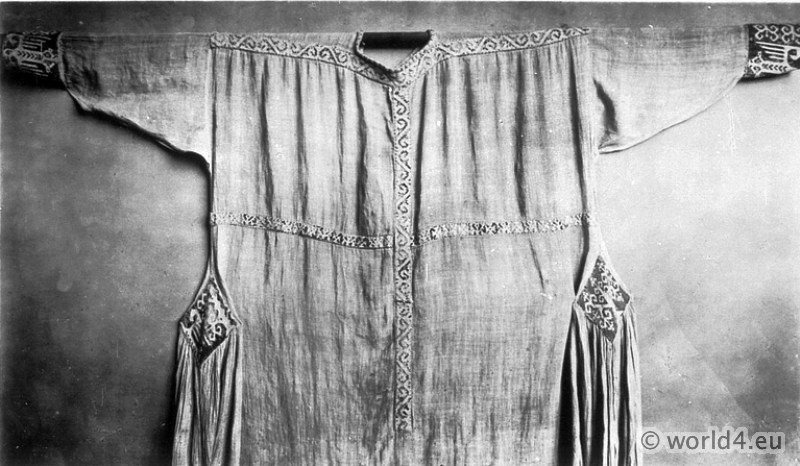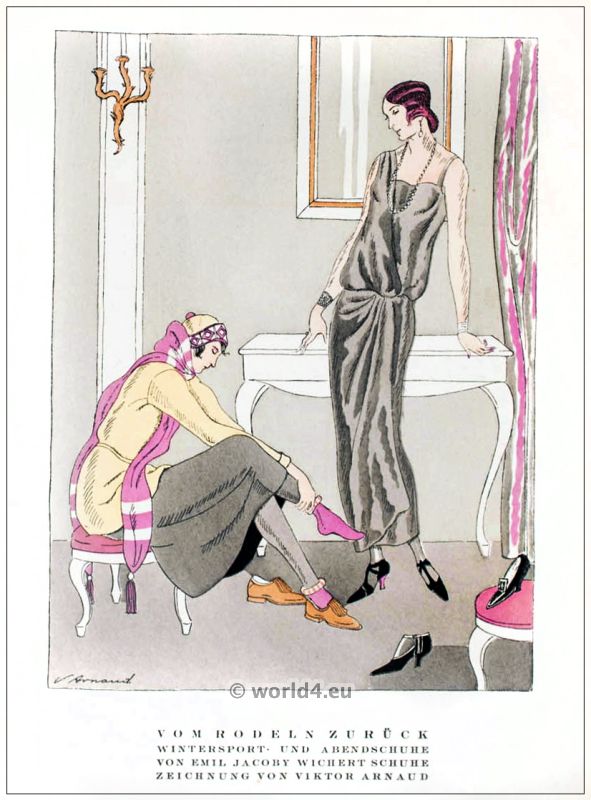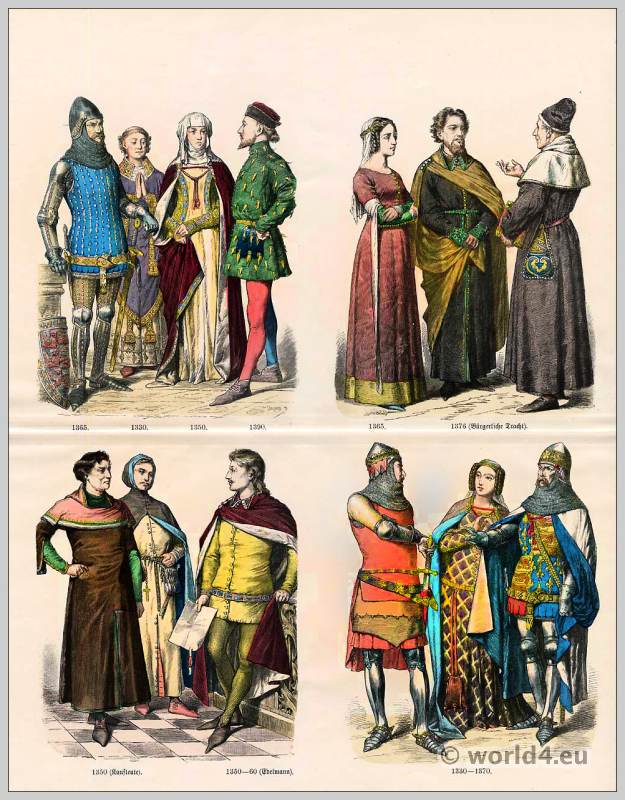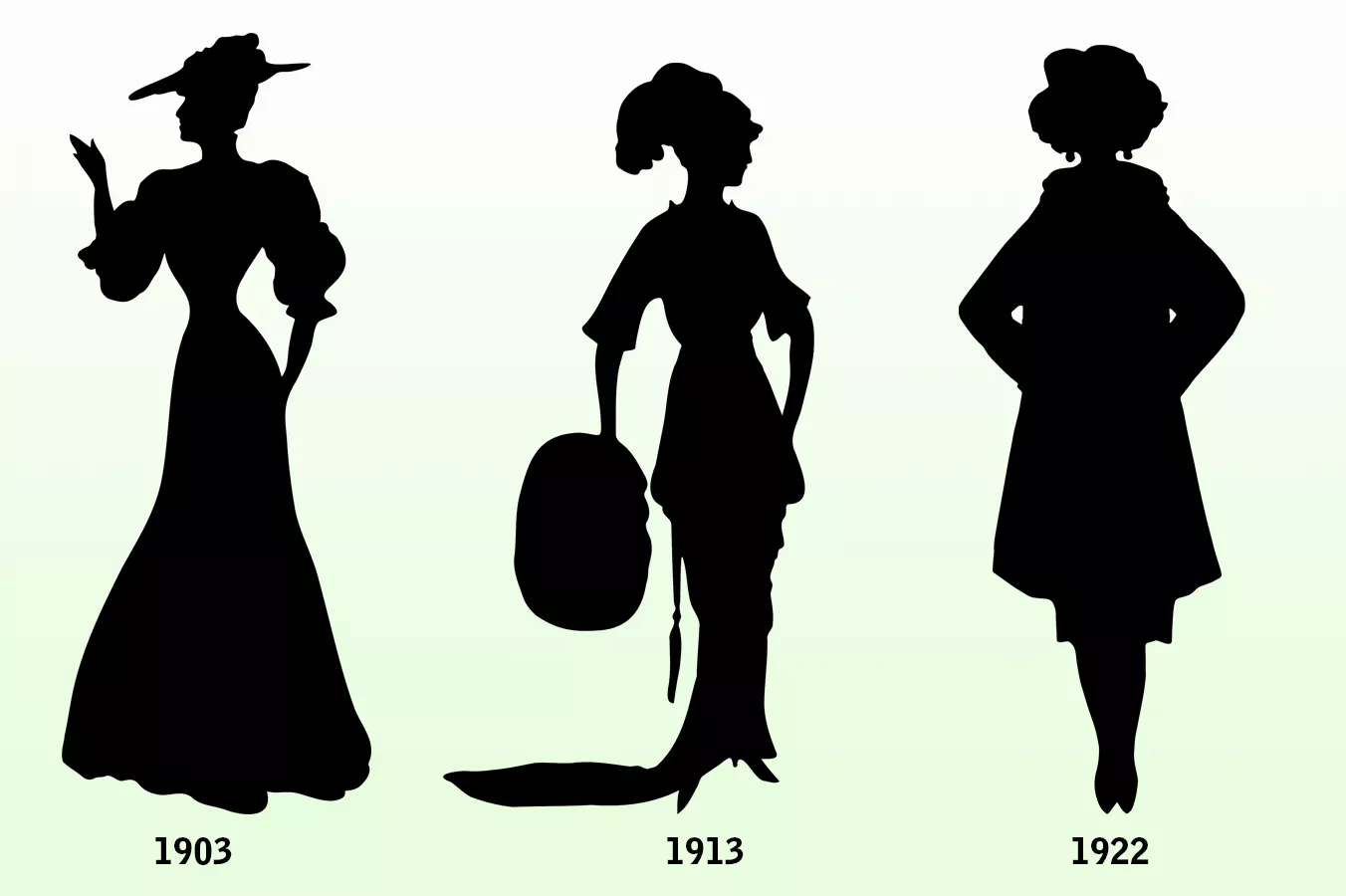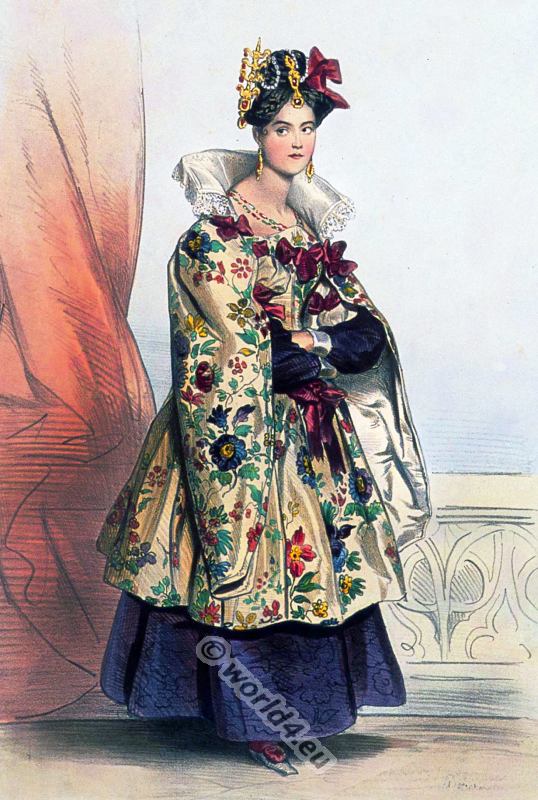Episcopal costume and insignia. The mitre, the cross, the superhumeral, the ring, the gloves, the shoes.
The Mitra Pretiosa of the 14th century.
The mitre – It was part of the bishops’ costume 200 years before it was depicted on the monuments. – The writers of the Carolingian period mention it without it being considered an indispensable attribute of episcopal dignity.
The first illustrations of the mitre date from the XI century; there it has the shape of a round cap with a headband attached at the back; underneath, one sometimes sees the edge of a white cap. At the beginning of the XII. In the beginning of the XIIth century the mitre is raised and receives two sideways horns, and the headband, still tied at the back, lets its two ends fall down over the back. In the second half of the XII. In the second half of the XII century, the position of the horns is changed, they are placed in front and behind; the headband with the ends hanging down is joined to the mitre itself.
At the beginning of the XVth century, the horns bulged out and took on the shape of the Gothic bow (cf. no. 6 of plate G1, Byzantine and Abyssinian). The mitre simplex was made of white silk, the mitre auriphrygiata of silk interwoven with gold, the mitre pretiosa set with pearls and stones.
Apart from bishops, the mitre was conferred on preferred abbots and canons.
The crook. – The crosier of wood, ivory, copper and gold, originally simpler in form (cf. the panel with the foot and panel GI, Byzantine and Abyssinian), consists of a staff ending in a volute, and is modelled on the lituus of the Roman augur. The bishop turned the volute towards the people over whom his jurisdiction extended, the abbot turned it backwards to indicate that his authority extended only over his closer congregation or following. Since the time of Charles VII, the base of the volute has often taken the form of a small church. In No. 4, the sudarium is attached to the crozier; this was the rule for the crozier of abbesses.
The superhumerale. – The superhumerale, a wide collar set with stones that continued across the front of the chest, was worn in the XIIth century. It was worn in the XII century, but did not last as an integral part of the episcopal costume.
The gloves. – The prelates were invested with them by their secular patrons. They were made of tricot, zindeltaffet or silk cloth and bore an embroidered cross in a nimbus on the back of the hand.
The ring. – It was given to bishops at their investiture as a sign of their marriage to the Church since the IV century. It was made of gold and decorated with a smooth stone.
The shoes. – The shoes of the Merovingian period, made of one piece, were preserved in the episcopal costume until the XIV century. Later, velvet slippers took their place.
took their place.
- Nos. 1 and 4. bishops. Mitra pretiosa; amictus, stola, manipula, amiculum, dalmatica and casubula.
- Nos. 2, 3, 7, 9, 10, 11 and 12. mitrae pretiosae.
- Nos. 5, 6, 14 and 15. details of the mitre bands.
- Nos. 8 and 13. embroidery motifs with precious stones of vertical stripes of the mitres.
Illustrations from Welby Pugin’s Glossary of ecclesiastical ornament and costum.
Vgl. J. B. Pascal, Institutions de l’art chrétien. – Quicherat, Histoire du costume en France. – Viollet-le-Duc, Dictionnaire du mobilier.
Source: History of Costume in Chronological Development by Auguste Racinet. Edited by Adolf Rosenberg. Berlin 1888.


